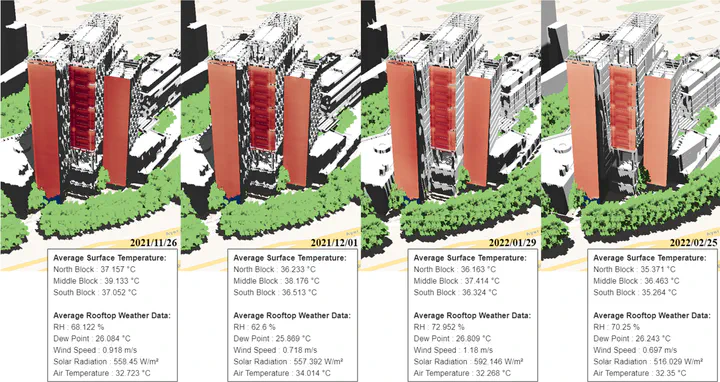A Dynamic Urban Digital Twin Integrating Longitudinal Thermal Imagery for Microclimate Studies

Abstract
Recently, the concept of a digital twin for the built environment has received significant attention due to its potential benefits to urban planners, engineers, and designers. The development of tools that aid in integrating real-world physical systems with digital capabilities is essential for advancing digital twin technology. In this work, we present one such digital twin tool that integrates the longitudinal thermal envelope data of buildings on the campus of the National University of Singapore with a virtual 3D model. Thermal images of the buildings were captured using a neighborhood-scale infrared observatory for a few months. The temperature profile of one of the buildings was extracted and mapped on the virtual 3D model. The digital twin model is developed in the deck.gl platform. This is one of the few studies on developing a dynamic digital twin incorporating temporally and spatially varying urban-scale 2D temperature envelope data with the virtual 3D model. The digital twin platform can study the microclimate and help urban planners identify the building elements contributing to the urban heat island (UHI) effect at the neighborhood scale.